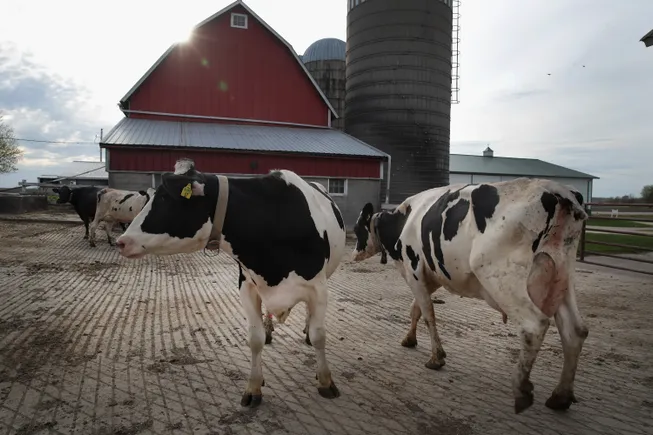Wyoming becomes 12th state to report bird flu in dairy cows

Wyoming has reported its first case of bird flu in dairy cows, expanding the outbreak to 12 states.
State officials said last week the case was identified in samples received by the Wyoming State Veterinary Laboratory. The U.S. Department of Agriculture’s National Veterinary Services Laboratory subsequently confirmed the positive case.
As more cows become ill, the main concern facing dairy farmers are production setbacks driven by milk losses, Hallie Hasel, a Wyoming state veterinarian, said in a statement. In Iowa, which also reported its first cases of bird flu in dairy cattle last week, officials are urging the USDA to compensate farmers for lost milk production or the cost of culling cows.
“Highly Pathogenic Avian Influenza continues to pose a significant threat to our livestock and the livelihoods of the farmers that care for them,” Iowa Secretary of Agriculture Mike Naig said in a statement. “This is going to take the entire agricultural community working together because we all have a stake.”
Health and agriculture agencies have been monitoring the situation since before late March, when the H5N1 virus emerged on a dairy farm in Texas. About 90 bird flu cases have been detected in cattle since then, according to the USDA’s online tracker as of June 11. Three U.S. dairy workers have also contracted the virus, with one exhibiting respiratory symptoms.
While many dairy cows have recovered after treatment, several have not. Dozens of infected cattle from five states have died from the virus or slaughter, Reuters reported.
Highly pathogenic avian influenza is lethal to wild birds and poultry, forcing farmers to eradicate their flocks to curb its spread, but has not been as severe in dairy cows. However, that could be changing as viral strains develop over time.
Recently, researchers infected six ferrets with one of the bird flu strains found on a Texas farm worker as part of a study conducted by the Centers for Disease Control and Prevention. All six ferrets died from infection.
This is notable to epidemiologists, who consider ferrets to be an animal model stand-in for humans. Following the study, CDC noted that H5N1 spread efficiently between ferrets in direct contact with the virus, but did not spread efficiently between ferrets via respiratory droplets, which is what is seen with seasonal flu. Risk to humans remains low.
Bird flu symptoms in cows can range from fever and loss of appetite to changes in manure and thick or discolored milk. The pasteurization process and cooking inactivates the virus in milk and ground beef, keeping the threat to the general public low, although farm workers with direct exposure to livestock are at a higher risk.
Source: fooddive.com

